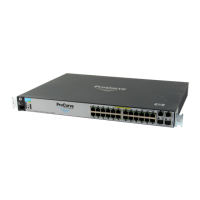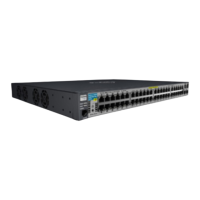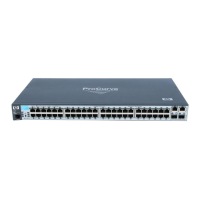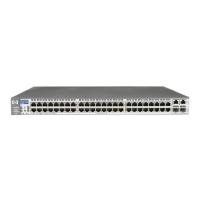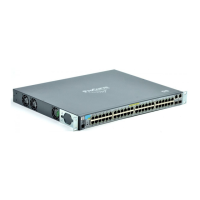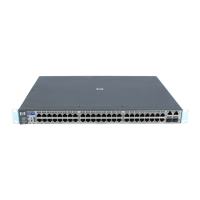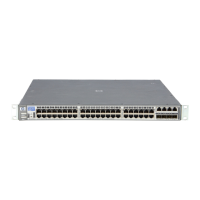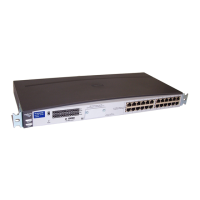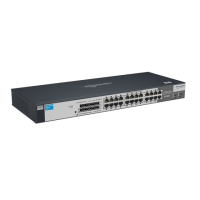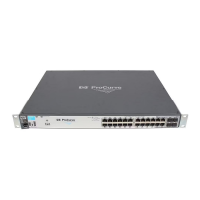Configuring for Network Management Applications
Using SNMP Tools To Manage the Switch
sFlow agent — A software process that runs as part of the network manage-
ment software within a device. The agent packages data into datagrams
that are forwarded to a central data collector.
sFlow destination — The central data collector that gathers datagrams from
sFlow-enabled switch ports on the network. The data collector decodes
the packet headers and other information to present detailed Layer 2 to
Layer 7 usage statistics.
Configuring sFlow
The following sFlow commands allow you to configure sFlow instances via
the CLI.
Syntax: [no] sflow <receiver-instance> destination <ip-address> [udp-port-num]
Enables an sFlow receiver/destination. The receiver-instance
number must be a 1, 2, or 3. By default, the udp destination port
number is 6343.
To disable an sFlow receiver/destination, enter no sflow
<receiver-instance>.
Syntax: sflow <receiver-instance> sampling <port-list> <sampling rate>
Once an sFlow receiver/destination has been enabled, this
command enables flow sampling for that instance. The receiver-
instance number is 1, 2, or 3, and the sampling rate is the
allowable non-zero skipcount for the specified port or ports.
To disable flow-sampling for the specified port-list, repeat the
above command with a sampling rate of “0”.
Syntax: sflow <receiver-instance> polling <port-list> <polling interval>
Once an sFlow receiver/destination has been enabled, this
command enables counter polling for that instance. The receiver-
instance number is 1, 2, or 3, and the polling interval may be set
to an allowable non-zero value to enable polling on the specified
port or ports.
To disable counter-polling for the specified port-list, repeat the
above command with a polling interval of “0”.
Note Under the multiple instance implementation, sFlow can be configured via the
CLI or via SNMP. However, CLI-owned sFlow configurations cannot be modi-
fied via SNMP, whereas SNMP-owned instances can be disabled via the CLI
using the no sflow <receiver-instance> command.
13-26
